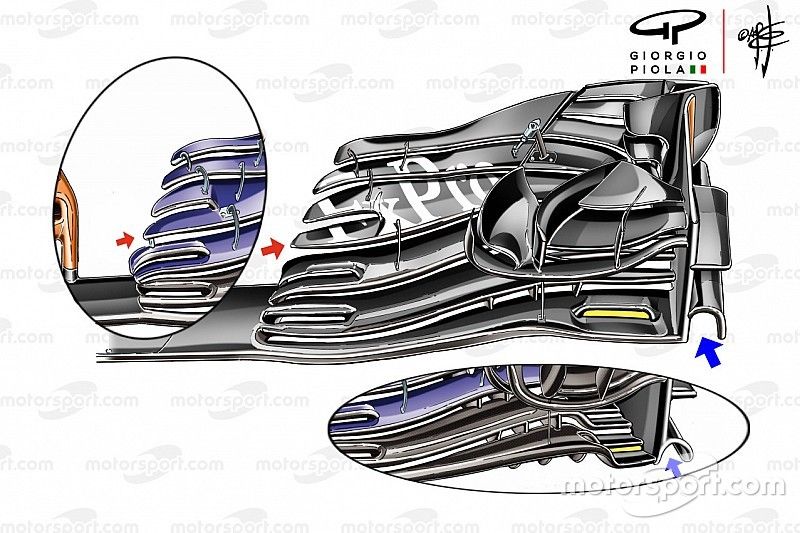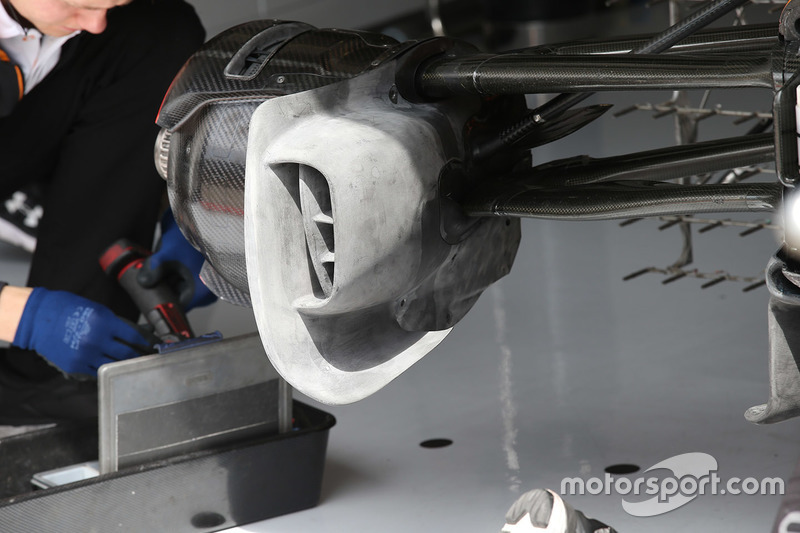McLaren's latest tech experiments in search for speed
McLaren arrived at last weekend’s Austrian Grand Prix determined to evaluate several key areas of its MCL33 as it bids to unlock the full potential of this year’s car.

Giorgio Piola
Progress for McLaren has been slow going this year, as the team has struggled to understand an issue that doesn’t translate the performance it is seeing on its simulation data (CFD/windtunnel) to what it is experiencing on track.
In recent races, this has led the Woking-based outfit to experiment with different aerodynamic configurations during free practice sessions as it tries to work out where it is missing performance.
A prototype front wing was the centrepiece of its experiments in Austria, with numerous changes made in order to feel out exactly where its current weaknesses lie.
The wing had several key changes:
- The archway that ordinary transitions steeply in the outer portion of the wing was reduced significantly, leaving just a gentle upturn on the leading edge of the wing.
- The strakes on the underside of the wing were retracted as they could no longer extend as far forward.
- A fully-enclosed hole was used in the outer section of the wing to feed the underside of the wing, in lieu of the edge slot that has been usually favoured (highlighted in yellow).
- A taller footplate arc was present (blue arrow).
- The tip of the first flap had an upward curvature to it, rather than a downward one – altering the rotation of the Y250 vortex shed below (red arrow).
Along with testing other revised 3D printed parts, such as the brake ducts (above), the team also mounted more pressure sensors, kiel probe arrays and sprayed the MCL33 with copious amounts of flo-viz paint as it hoped to understand with more clarity where things were going wrong.
While the new parts may not be the answer to all the team’s problems, the vast range of experiments (as shown above) should at least help the team understand what it needs – and fast-track the right modifications to move up the grid.
Be part of Motorsport community
Join the conversationShare Or Save This Story
Subscribe and access Motorsport.com with your ad-blocker.
From Formula 1 to MotoGP we report straight from the paddock because we love our sport, just like you. In order to keep delivering our expert journalism, our website uses advertising. Still, we want to give you the opportunity to enjoy an ad-free and tracker-free website and to continue using your adblocker.





















Top Comments